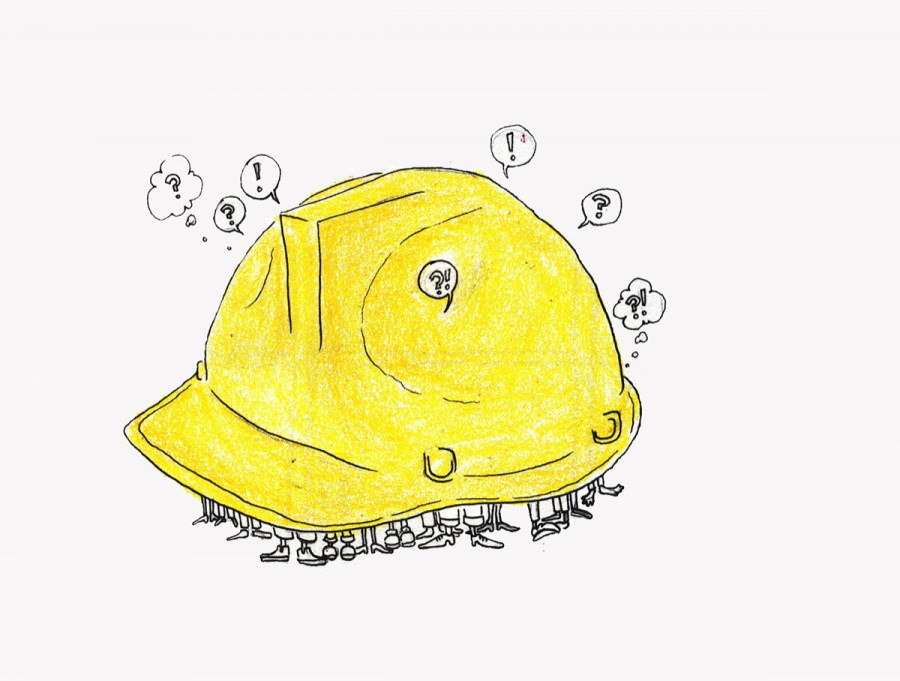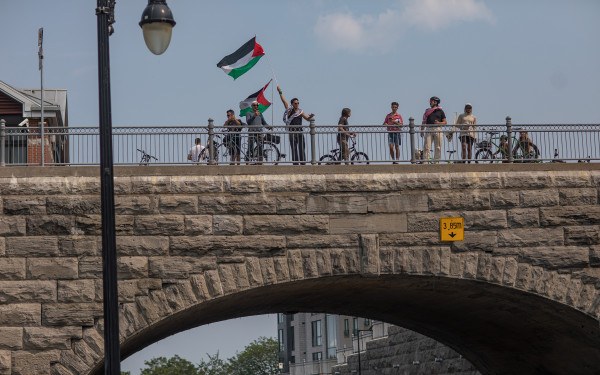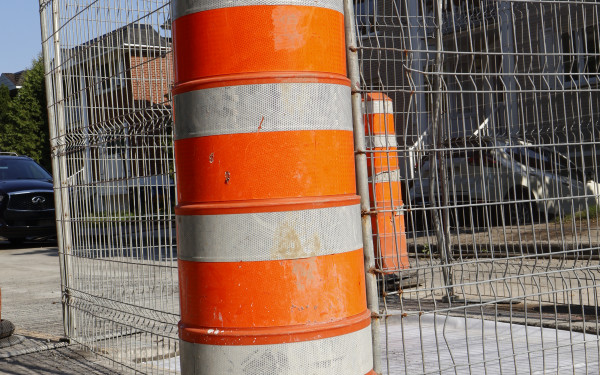The Construction We Deserve
As a new kid on the streets of Montreal, I came with high hopes and dreams for this magical place I’d heard so much about.
As an urban planner, I couldn’t wait for the promised paradise of green spaces, culture, arts, people, music and food—so I thought.
Montreal does have all these things, and more, but as I stepped off my train into the urban centre of the city, I was greeted by an endless supply of orange construction cones littering the streets. Needless to say, this wasn’t the greatest first impression.
As I’ve gotten acquainted with my new home, I’ve realized that not only are construction cones the most annoying part of my day—not to mention checking over my shoulder so I don’t get run over on my bike while dodging them—they’re also an opportunity for Montreal to implement new, sustainable urban practices.
These are changes that would help strengthen the city’s identity and sense of community moving into its 375th year.
Like many cyclists, I’ve had a few close calls in Montreal, and then a few more. And since there are so many of us, the city should make the changes needed to benefit cyclists, cars and pedestrians alike. Improved transportation infrastructure would contribute to a more connected and sustainable citywide community.
That’s where these orange construction cones come in. Hear me out: with so much construction already underway in Montreal, why not add some more? Why not use this current traffic nightmare to make it that much better in the future?
We need a more connected and safe transit network for the city of Montreal. That means more protected bike lanes, secure bike parking at metro stations, and the ability to take a bicycle on the bus —I know, shocking, but many Canadian cities are already doing this. Here are a few ways I think Montreal could improve its cycling infrastructure.
Bicycle Lanes
I’ll start by saying that Montreal, in comparison to most Canadian cities I’ve biked in, has an enormous number of bike lanes that are fairly well connected. On the other hand, many of these bike lanes are simply painted on the ground, providing little, if any security for cyclists. This is a good start, but there is still a long way to go.
Painted white line bike lanes can provide cyclists with a false sense of security—from personal experience they are quite dangerous when cars suddenly decide that they want to turn right or park curbside. And then there’s dooring, but don’t get me started on that.
Intersections can be the most dangerous part of a cycling commute, with cars coming from all different directions—generally looking out for other cars, sometimes for pedestrians and then cyclists, if there’s time before the light turns yellow.
Protected bike lanes help prevent the right-turning, curbside parking and dooring problems, for the most part—and bring increased awareness to cars of the cyclists on the road.
While we’re tearing up all the streets in this city, often closing off bike lanes which brings increased risk, why not give a little back to the cyclist and add a little more concrete between cars and bikes.
Pedestrians will likely also be happier with fewer anxious cyclists hitting the sidewalk in some areas where the road can be a little sketchy—and who knows, maybe encourage more cyclists to ride as a healthy and sustainable mode of transportation.
Bicycle Parking
Montreal does have a high number of cyclists—2.5 per cent of travel is taken on bikes in the city, every day. So it would be nice if more areas in the city reflected this with an equivalent number of bicycle parking spaces, especially at metro stations—maybe, please, at Concordia too. Although most stations do have some form of bike parking, I’ve found that most of the time they don’t have enough.
Bike parking at metro stations encourages a connected transit network.
Lionel Groulx, a station in the heart of St. Henri, is currently piloting a new bike shelter for the city—a place that allows you to securely store your bike using your OPUS card. This is the kind of innovative urban design I want to see more of in Montreal’s cycling infrastructure, or at least more two point-of-contact bike racks so I don’t come back to a mangled bike.
Bike parking, somewhat like car parking, is a necessity in the modern city, maybe even more important in this quickly urbanizing metropolis. Bike parking takes less space, and although getting rid of car parking is unrealistic, maybe we could trim, and save a little space in the city for some other new urban design projects.
Bikes on the Bus
Okay, so I may have exaggerated a bit earlier, Montreal does have a few bike racks on their buses—in eight of just over 200 bus routes.
If you ask most Montrealers, they don’t even know those eight exist. I also find it a little strange that this service is only available between mid-April to mid-November. What if I want to ride my bike and take the bus outside of those times? Considering bikes are transported by the bus with a rack mounted on the front, not offering the service actually requires them to either remove the rack or simply deny riders access to it.
Having the ability to take a bike on the bus is a necessity for Montreal’s transportation network. It allows for quicker and more efficient transit between two points, being able to cycle beyond Montreal transit network in more remote areas of the city.
Connectivity in a cycling network, whether by your bike with you on the bus, leaving it at a metro stop, or just being safe while riding your bike throughout the city, are basic necessities.
Montreal is clearly trying to keep up with the current needs of its residents, considering the extensive construction that is currently going on, but there needs to be more work put into making it better, not keeping it the same. Bikes are the future, so why not put the work in now before its to late. Cyclist deaths are up 50 per cent—and serious injuries up 43 per cent—as more people decide to take their bikes rather than drive. Let’s turn that trend around.
Let’s put these cones to good use. Then get rid of them forever.
I want to see Montreal implement the changes it needs and deserves. After all, it is one of the greatest cycling cities in North America. Why not make it the best?


_600_832_s.png)




_600_375_90_s_c1.jpg)